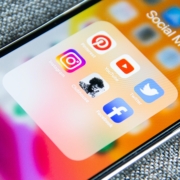
On set for James Hardie TVC
Changing Consumer Behaviour and the New Normal
Video marketing has changed, as COVID-19 has brought about permanent changes in consumer behaviour. Consumers may go through the entirety of the sales process online without ever having a face-to-face experience. They may prefer to do everything from the convenience of their homes. Increasingly, our clients are finding that video content creates a connection with customers during these new changes.
Building relationships with your customers is a key element to increasing the customer lifetime value; how much they spend over the frontend and back end of the sales cycle. For some financial services companies, this means ensuring that they start investing with you at the start, and that’s built on trust. How can you build trust with a new client, so that they choose to invest with you? The answer lies in a combination of touch points, one of which includes video content to ensure you get your message across in a simple, succinct and fast way. That’s why some of our clients in the FSI sector are using video for market updates, testimonials, ads and even livestreams.
Go to the Platinum Asset Management case study to learn more about how we pivoted our events strategy to include live streams instead of face-to-face events during COVID-19. We continue to make financial commentary videos in 2023. We make 3-4 videos per month for Platinum Asset Management.
Video Content and the Australian Consumer
As its name suggests, video marketing is an online marketing tool that is based on the use of audiovisual images, mainly through the Internet, to achieve different objectives of a company’s marketing strategy.
According to a report by Marigold, consumers in Australia and New Zealand are digitally connected at rates that often exceed their global counterparts. There has been an increase year-on-year in purchases from multiple online channels, as well as an increase in the use of mobile devices to view and share content.
Australian consumers want to receive personalised content and offers from brands they trust and are happy to share their data for it (Marigold, 2023). Creating personalised video content is the best way to engage your consumers, whether it’s via email, YouTube, or social media advertising. You’ll get a better ROI when you use video to explain your products to your audience. It is also crucial to know where your consumers ‘hang out’. According to Allan Dib, founder of Successwise, being in the right channel for your audience is equally as important as the message itself. Video messaging, when placed in the right channel, is bound to bring traffic to your page.
From a case study done by Marigold of 1054 ANZ customers, 62% have used their mobile phone in-store to research a potential purchase and 58% have made a purchase in-app. According to Hubspot, vertical form video is the way of the future for savvy marketers.
Major social media platforms like TikTok, Instagram and YouTube have implemented vertical-form videos. These are highly engaging, and you stand to increase your ROI by 500% simply by using this format. Hubspot’s 2023 Trend Report also highlighted that these short videos under 60 seconds performed the best. Marketers also use different strategies to generate leads from their videos; the top strategy being adding links into video ad content on social media channels.
Loyalty programs can be a great way to keep in touch with your prospect list without being annoying. It is a way of rewarding your customers and building strong relationships with them based on incentives. To explain loyalty, video content can be used to quickly explain how your loyalty program works. These are just a few ways in which video can impact consumer behaviour if it is delivered through the right channels.
Creating Effective Video Content that Sells
Carrying out your video project effectively is ultimately worth its weight in gold. Short-form videos can be created to build brand awareness, send customers to a landing page, or even provide testimonials. These videos, if done right, can give consumers a feel of your brand, and ultimately build trust through a phone screen. Let’s look at some stats. According to Hubspot:
- 41% of marketers say that overall ROI from video marketing is high, and 23% say that video has higher ROI than other types of content.
- Sharing your products through video can be an effective and easy way to increase your reach. 57% of marketers say that this format is easy to create. 86% of marketers say that video is great for teaching customers about your products.
- 81% of companies that participated in the survey had a marketing budget dedicated solely to video.
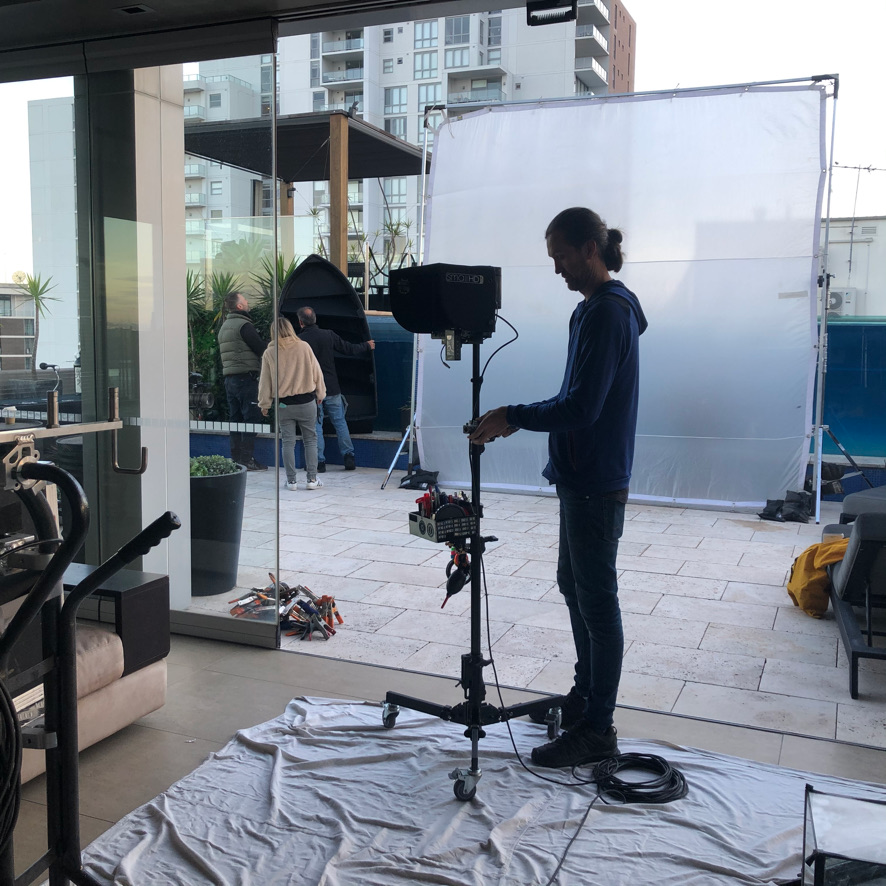
Behind the scenes for Kraken Rum’s social media campaign.
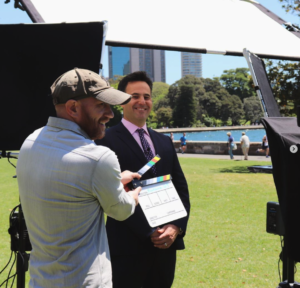
Behind the scenes with Platinum Asset Management.
How to Create Great Marketing Videos
Realistically, the subject of how to create great, engaging marketing videos is an in-depth, intricate topic that could fill entire shelves of a library.
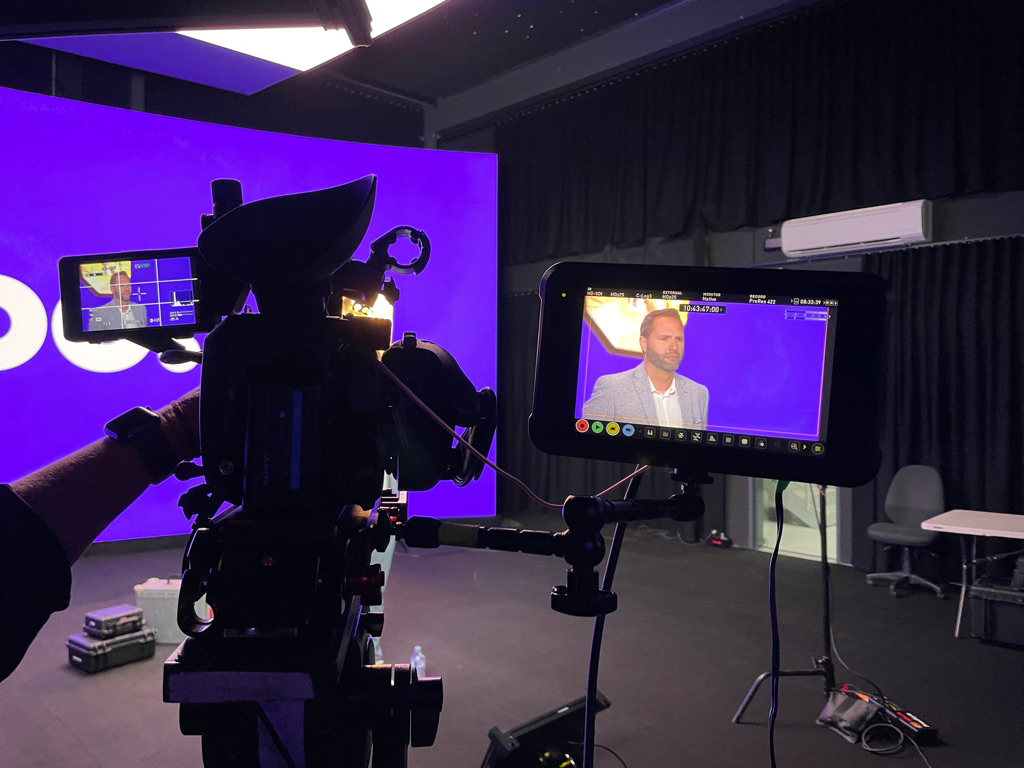
Yahoo Pre-record live stream
However, as part of your digital marketing strategy, to create a video that converts, sells, entertains, and informs, whatever your objective may be, there are a few core pillars to remember in the production process.
Target Audience
When it comes to marketing videos, utilise one of the core principles of marketing.
Establish your target audience, research as much as you can, and tailor your video to them.
On social media platforms, there exists a range of fantastic tools you can use to target your videos to your audience, such as Meta Ads Manager.
Brand Message
Figure out what your company is trying to say, what your brand signifies, and what exactly you offer, and bring that to life with a branded video.
A marketing video is a wonderful method to get people aware of the who, what, and why of your brand, but brand videos also need to get your message across effectively.
Educate, inform and entertain.
Make sure everything down to your video editing is on the same page as the people you’re trying to reach with your brand videos.
Marketing Goals/Video Strategy
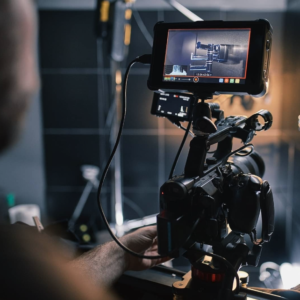
Camera in action.
As most great marketing videos need planning from pre- to post-production, so does your marketing video content strategy.
Figure out when you’re going to release it, distribution channels, how the sales funnel will look, the final product, etc. According to a survey of 500 marketing professionals done by Hubspot, pre-production takes the most time. This involves brainstorming, writing a script for your video and casting the actors. Once you have done all of this, it’s time to start shooting your video. If you’re shooting a video series, it’s best to shoot everything at once and then cut the video down into sections using Premiere Pro or another editing program of your choice. iMovie is another alternative.
Your video content strategy should be well planned out. If you are releasing video content on social media, using a scheduling tool like Meta Business Suite or Buffer can be convenient as the tool will automatically release content for you. These tools also offer analytics which is crucial to measuring your results and tweaking your strategy as you go along. Find what is most successful, rinse, and then repeat.
Plan, plan, and plan again.
Where Should You Focus Your Video Marketing Strategy?
When considering a good video marketing strategy, the first question you must ask yourself is usually: Which network or networks should I focus on when creating and promoting my videos?
There are a ton of platforms out there, but let’s dive into the most prominent video hosting platforms today.
YouTube
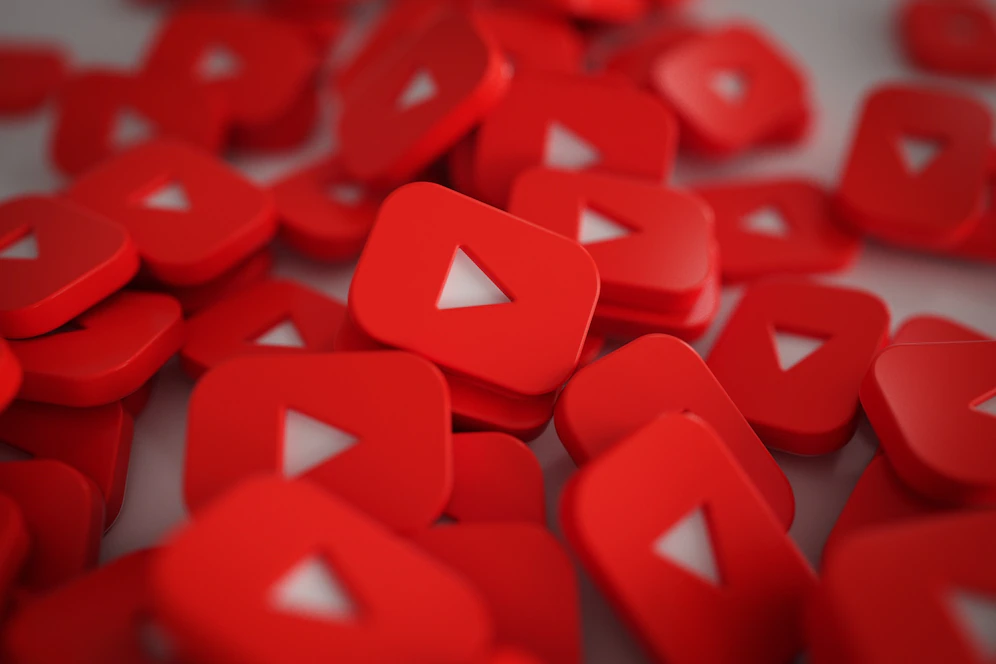
Since its creation in 2005, YouTube has without a shred of doubt become the video platform par excellence worldwide.
It possesses a whopping 2 billion active users per month (that’s a lot of potential eyeballs).
Its model is focused on the millennial and centennial generations since they are the ones who consume the most hours of video.
Individuals between 16 and 25 years old consume an average of 9.21h of online video per week (only 6.19h on TV) and those between 26 and 35 years old 8.68h (compared to 7.90h on TV).
The generational change is seen, the older the age, the less consumption of digital video and the more of television. So, we are inexorably heading towards this new audiovisual paradigm.
According to YouTube, more than 1.9 billion users log into the global video platform every month, and more than 1 billion hours of video are watched every day.
Perhaps the most notable stat (only one more I promise!) for marketers is that mobile devices play a crucial role since 70% of views come from mobile.
Facebook (Meta)
In recent times Facebook has received criticism (for several obvious reasons). However, in the social media landscape, it continues to be a presence that shouldn’t be ignored by any social media specialist.
On average, the site generates more than 8 billion daily views of video content, which is more than 100 million hours of video per day

Astonishingly, only 15% of the content is in video format.
Therefore, there remains a vast field of opportunity to take advantage of your potential audience, especially as around 60% per cent of users were quoted as saying they were on the platform to watch videos.
Video is shared on average 89.5 times more than any other type of format, making it the most viral type of content on the platform.
In addition, the native videos of the platform have 10 times more reach than the links to YouTube. So upload your videos on this network, instead of just sharing them from another channel.
Videos between 21 and 44 seconds are the most popular, so keep your marketing video short and sweet!
Instagram

Originally a platform for sharing photos, for the past decade Instagram has evolved into a major player in the social media landscape, now harnessing a combination of videos, photos, reels, and stories.
It launched its video feature in June 2013 and one of its main features is its brevity: videos were initially limited to 15 seconds, but can now be extended up to a minute.
You can upload videos to your profile feed, stories, reels, live stream, and also on Instagram TV.
In short, you have an enormous audience and a ton of different ways to deliver your marketing videos.
Tik Tok
There’s nothing really to be said about TikTok other than the obvious, They’ve completely changed the game.

Facilitating an international TVC campaign
Ever since its inception in late 2016, TikTok has emerged to change the face of social media video with its short, reel-style video format.
Whether you’re a video marketing agency or a business looking to reach new clients and build a brand, it’s hard to ignore the sheer opportunities that lie with getting the right audience on TikTok.
Advantages of Video Marketing
Now that you know where to put your videos, here are a few reasons why putting your videos in the right spots will supplement your marketing objectives greatly.
Engagement

Video strategy allows you to transmit a message in an original format. Videos that tend to work are those that use the great pillars of storytelling, in the sense they make the user feel something, whether they laugh or cry.
If you make people feel a certain way, then they’re much more likely to remember your message, and most importantly, your brand.
If you’re looking to get your message across in the most customisable way there is, the marketing video is hard to ignore. Create a video that you know will engage your target market with maximum impact, rinse, repeat, and watch your community grow.
It’s Easy (And Gets Around)
Video consumption tends to be easier to consume than reading text for many individuals, so audiences tend to associate it with leisure and are more receptive as a result.
Generally speaking, it’s easier to capture the attention of users with audiovisual content than with text content.
In addition, quality video content is more likely to be shared, compounding higher engagement and even becoming viral.
Purchase: Working on the brand’s video marketing increases conversion. It has been proven that videos help in the purchase decision since they allow a better conception of the appearance and operation of the product or service.
Authority

Having a consistent stream of high-quality promotional videos, corporate videos, brand videos, and testimonial videos (you get the picture) will cement your brand as an authority in your niche.
If you possess a prolific library of well-made, relevant videos, then it legitimises your entire business and people will see you as a serious competitor (which means more conversions)
Plus, marketing video production companies operating in the digital sphere will generally be much cheaper than paying for a tv commercial.
Video production can be quite expensive, so getting cost-effective, high-quality marketing video production should always be high on your list.
After all, who doesn’t like a bang for your buck?
Video marketing agency

On set for a livestream event.
Are video production services and corporate video production letting you down?
AD Media has decades of video production experience. We work with our clients to deliver specific video content that serves your brand best. Contact us for more information on 0416 022 287 or email us at info@admedia.net.au
Sources:
Hubspot 2023 Market Trends Report
Marigold Report
The One-Page Marketing Plan – Alan Dib (Book)

